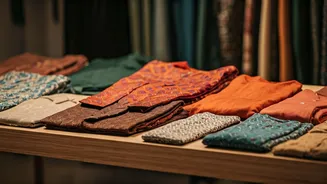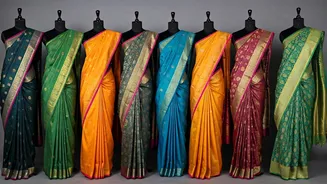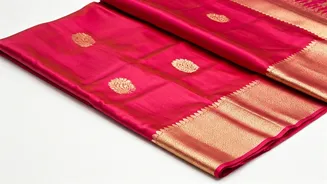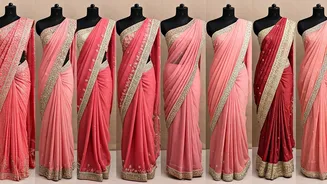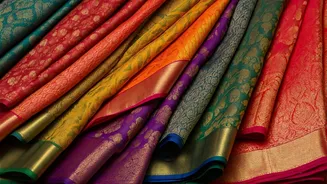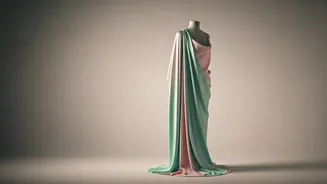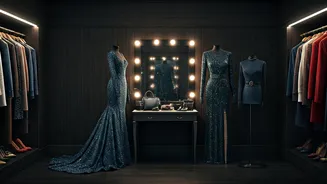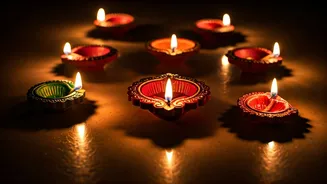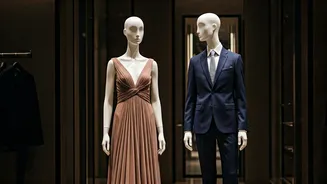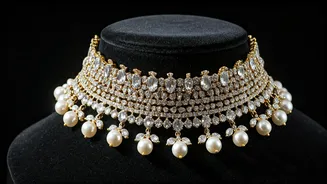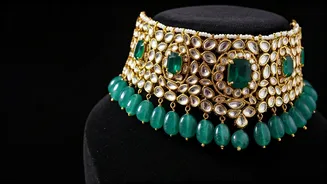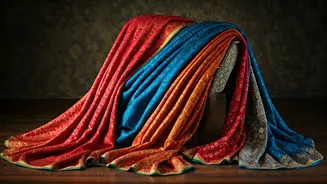Tech's Fashion Footprint
Technology has fundamentally changed how fashion operates in India. Digital platforms and e-commerce have revolutionized accessibility, allowing designers
to connect with a broader audience. Artificial intelligence (AI) is also playing a crucial role, with algorithms being used to personalize shopping experiences and predict trends. Moreover, virtual reality (VR) and augmented reality (AR) are creating innovative ways for consumers to interact with fashion, such as virtual try-ons. These technological advancements are not only improving convenience for consumers but also streamlining the production and distribution processes for businesses. This includes the automation of certain tasks and improved supply chain management, making the entire industry more efficient and responsive to consumer demand.
Sustainability's Sway
Sustainability is rapidly becoming a core value within India's fashion industry. Consumers are increasingly aware of the environmental and social impacts of their purchasing decisions, pushing brands to adopt more responsible practices. The use of eco-friendly materials, such as organic cotton and recycled fabrics, is on the rise. Brands are also focusing on ethical sourcing and fair labor practices. Initiatives like slow fashion, which emphasize quality and durability over fast-moving trends, are gaining popularity. Furthermore, there is growing interest in circular fashion models, which aim to reduce waste through practices such as clothing rental, resale, and recycling programs. These developments represent a shift towards a more conscious and responsible fashion industry in India.
Trendsetting Transformations
The Indian fashion scene is constantly evolving, with emerging trends reflecting both local and global influences. One notable trend is the fusion of traditional Indian wear with contemporary designs. This includes the incorporation of modern silhouettes and embellishments into classic garments, such as sarees and kurtas. Streetwear and athleisure are also gaining prominence, with comfortable and versatile clothing becoming increasingly popular. Furthermore, the focus on body positivity and inclusivity is leading to a wider range of sizes and styles, catering to diverse body types. Additionally, there is a growing emphasis on personalization and customization, allowing consumers to express their individual styles. These trends signal a move towards a more diverse, inclusive, and expressive fashion landscape in India.
Traditional Meets Modern
The blending of traditional and modern styles is a defining characteristic of the current fashion landscape in India. Designers are experimenting with new ways to reinterpret classic Indian garments. For instance, the saree, a staple in Indian culture, is now being paired with contemporary blouses and accessories. Kurtas are being styled with jeans or skirts, creating versatile looks. The use of traditional Indian textiles and embroidery techniques in modern designs is also common. This includes the incorporation of vibrant colours, intricate patterns, and artisanal craftsmanship into contemporary clothing. The fusion of old and new is not only celebrating Indian heritage but also making traditional wear more accessible and relevant for the modern consumer. This approach helps to keep traditional clothing alive in a world that is fast-moving.
